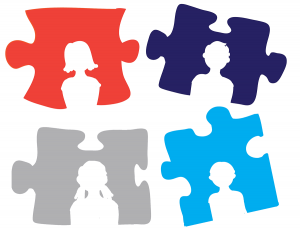
Barbara Taylor’s article “Content, Process, and Product: Modeling Differentiated Instruction,” gives great insight on how teachers, especially teacher candidates like myself could differentiate instruction through these three steps: content, process and product. In detail, Taylor explains how teachers generally differentiate “content—the “what” of instruction; process—the “how” of instruction; and product—the “evidence” of instruction” (p. 14). Furthermore, teachers also “differentiate by levels in the class: below target, on target, and above target” (p. 14).
Differentiating content means that teachers can vary the level of complexity. To further illustrate how to differentiate content, Taylor discusses how in “an English class, students can read textbooks or other literature at different reading levels addressed to their specific needs. Because most classes have only one set of textbooks at grade reading level, the teacher must provide other reading materials at various levels” (p. 14).
Differentiating process means that teachers can vary the learning activities based on the students’ interests or learning styles. “For example, in a history class, students could conduct Internet research, interview community members, draw maps, or construct models. While all students have similar content to cover, they may choose from an array of activities or processes that are of interest to them or that address their various learning styles” (p. 14).
Differentiating product means that students have a choice in how they demonstrate what they have learned. “For example, in a science class, students can write a paper, conduct a lab and report the procedures and results, or present a PowerPoint® on the topic” (p. 14). Taylor explains that any one of these aforementioned choices also can be used to differentiate target levels as well. “For example, everyone in the science class can conduct a lab, but the requirements for writing the procedures and results can be varied for each target group” (p. 14).
This article is simple yet powerful in how I can differentiate instruction in my diverse classroom and any diverse classroom for that matter. The article speaks on not just how to differentiate the content, it also gives concrete examples on how teachers can differentiate process and product. I think it is so easy to just differentiate one out of the three aspects, but in order to equitably respond to all diverse students, teachers like myself, need to take into consideration of the students’ level (whether they are below target, on target, and above target), students’ needs, interests and learning styles. By doing so, I will be able to be in the right mindset to thoughtfully and critically differentiate the content, process, and product for each student so that each student is provided with multiple paths to a learning goal. Additionally, differentiating instruction in the content, process and product, teachers “can engage all students…that is appealing, developmentally appropriate, and motivational” (p. 17).
Taylor, Barbara Kline. (2015). Content, process, and product: modeling differentiated instruction. Kappa Delta Pi Record 51(1), p. 13-17.
